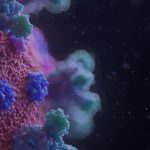COVID-19 Literature Situation Report
COVID-19 Literature Situation Report is a daily (M-F) newsletter that provides a succinct summary of the latest scientific literature related to the COVID-19 pandemic.
The scientific literature on COVID-19 is rapidly evolving and these articles were selected for review based on their relevance to Washington State decision making around COVID-19 response efforts. Included in these Lit Reps are some manuscripts that have been made available online as pre-prints but have not yet undergone peer review. Please be aware of this when reviewing articles included in the Lit Reps.
Click the SUBSCRIBE button in the right-hand column to subscribe to daily reports delivered to your inbox.
February 2, 2021
COVID-19 Literature Situation Report Feb 2, 2021

Interim analysis of the phase 3 trial of the recombinant adenovirus (rAd)-based vaccine Gam-COVID-Vac (Sputnik V) (n=19,866) showed an efficacy of 91.6% (CI: 85.6%-95.2%) in preventing COVID-19 by 21 days after the first dose (the day of dose 2). The observed vaccine efficacy was >87% in all age and sex subgroups.
February 1, 2021
COVID-19 Literature Situation Report Feb 1, 2021

The American Academy of Pediatrics guidelines for children returning to athletic activities recommend wearing cloth face masks during indoor sports and consulting a physician regarding potential cardiovascular symptoms in children with COVID-19 prior to their return to activity
January 29, 2021
COVID-19 Literature Situation Report Jan 29, 2021

Health care workers hospitalized for COVID-19 were less likely to require admission to an intensive care unit and less likely to be admitted for 7 days or longer when compared to matched non-healthcare workers. There were no differences between HCWs and non-HCWs in terms of need for mechanical ventilation.
January 28, 2021
COVID-19 Literature Situation Report Jan 28, 2021

Recipients of the 2-dose regimen of the Pfizer vaccine (n=20) had similar neutralizing titers against SARS-CoV-2 viruses engineered to contain key spike protein mutations from B.1.1.7 variant (1.4-fold) and B.1.351 variant (0.8-fold) compared to neutralizing geometric mean titers (GMTs) against wild-type SARS-CoV-2.
Synthesis Report: COVID-19 and Schools January 28, 2021

This document is intended to serve an updated resource compiling information about what is known about COVID-19 and SARS-CoV-2 in the context of schools, with a primary focus on K-12 grades.
January 27, 2021
COVID-19 Literature Situation Report Jan 27, 2021

The SARS-CoV-2 variant B.1.351 (South Africa) showed some resistance to neutralization by certain monoclonal antibodies, convalescent plasma, and sera from people who had received the Pfizer or Moderna vaccines. The B.1.1.7 (UK) variant also showed some resistance to neutralization, but to a lesser extent.
January 26, 2021
COVID-19 Literature Situation Report Jan 26, 2021

An outbreak of SARS-CoV-2 associated with a Florida high school wrestling tournament in December 2020 had an attack rate of at least 30% and a secondary attack rate of at least 9%. Among contacts, household members had the highest attack rate (at least 30%) and test positivity rate (60%).
January 25, 2021
COVID-19 Literature Situation Report Jan 25, 2021

Sera from human subjects or non-human primates that received the mRNA-1273 (Moderna) vaccine showed no significant reduction in neutralization activity against the SARS-CoV-2 B.1.1.7 variant emerging from the UK, but reduced activity against the B.1.351 variant emerging from South Africa.
January 21, 2021
COVID-19 Literature Situation Report Jan 21, 2021

Compared to a 59% reduction in transmission with a 14-day quarantine period, a 7-day quarantine with a negative RT-PCR test or a negative antigen test on day 7 could reduce transmission by 54% and 50%, respectively.
January 20, 2021
COVID-19 Literature Situation Report Jan 20, 2021

The SARS-CoV-2 501Y.V2 lineage, first identified in South Africa, was found to largely escape neutralization from both monoclonal antibodies and convalescent polyclonal sera capable of neutralizing existing parent lineages.
Previous page Next page